Post-lockdown interview with Pierre-Emmanuel Le Goff, La Vingt-Cinquième Heure founder
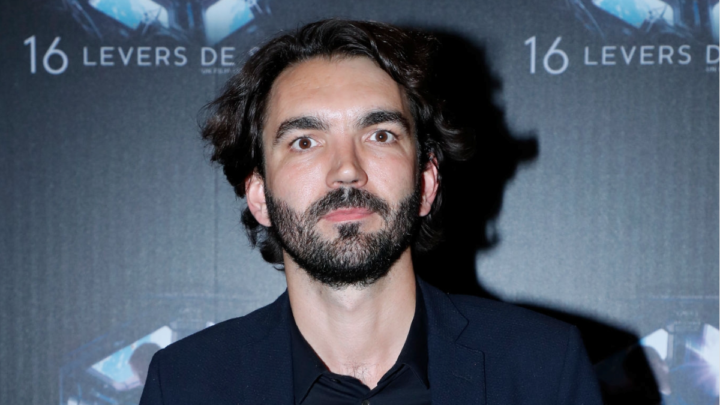
Post-lockdown, NewImages Festival keeps on shining a spotlight on its friends and partners. We strive to better understand and support all those who craft new images throughout this personal and professional journey, so we can live through this pivotal period together.
In March, Pierre-Emmanuel LeGoff, General Manager, La Vingt-Cinquième Heure Distribution, launched a virtual cinema service, shortly after the lockdown was announced in France. The online platform aims to help movie theatres get through the weeks and months they are forced to close their doors for health reasons. Their philosophy can be summed up perfectly by – what else? – the famous movie line, “For things to remain the same, everything must change.”[1]
On 9 June, Forum des images will launch Le FIL [2], a virtual cinema with regular screenings, every Tuesday at 8.30pm, on the Vingt-Cinquième Heure [3] platform. Our audiences can look forward to a curated online program! We can’t wait to reopen our spaces and welcome you again! We are also looking into a dedicated collaboration with NewImages Festival, with new VR functionalities.
“Our virtual cinema is still just a crutch, a digital prosthesis, that has to be used wisely. Nothing can replace face-to-face interaction.”
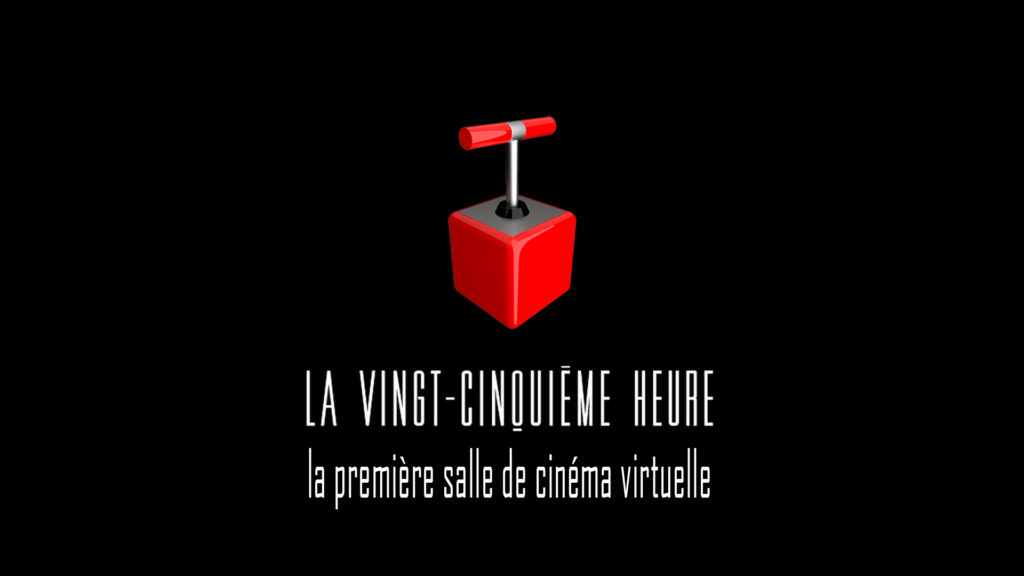
Please introduce yourself and your work
I am the General Manager and founding partner of La Vingt-Cinquième Heure Production and La Vingt-Cinquième Heure Distribution. I am also a film director, producer, distributor and, now, kind of an exhibitor with our new virtual cinema. We also launched Le Troisième Hémisphère, a company dedicated to new technologies and VR post-production.
What is your post-lockdown experience like?
I’m of two minds about it. Whereas we saw pollution go down a lot during the lockdown – we could hear birds singing in the morning, for example –, the noise is coming back with a vengeance with loads of people back in the streets again and an almost hectic atmosphere. My wife is due to give birth in three weeks and it’s been a tricky experience. Oddly, there were lots of good things that came out of the lockdown. Beyond the health-related tragedy, it meant that we could take a good look at the way we think and live. We worry that everything will go back to how it was before, particularly in terms of consumption.
With the launch of your virtual cinema in March, you were one of the few companies to foresee the lockdown. How did you do it?
We were on very high alert – especially me, with my wife being pregnant. She was really paying close attention to the situation and she passed on a lot of health-related news to me. On the professional side of things, I went searching for more news and I found out that cinemas were closing in China, and then in Italy… Since similar causes have similar effects, there was no reason for this not to happen in France. From mid-February on, I started to warn my union and the CNC (the French Centre for Cinema and the Moving Image). The partial or total closure of cinemas was unimaginable at the time, but I realized that it was already happening in other countries.
We were already in the process of developing a video call solution so that film directors could go and meet audiences in remote areas. Internally, we sped up development and added a geolocation feature to this virtual cinema service for national releases, and to prevent overlapping in terms of geographic areas and viewers. Our film Les Grands Voisins was set to come out on 1 April, and we felt the service needed to be ready for the premiere, on 25 March. We held in-house crisis meetings and decided to launch a beta version, in order to get it out on time. Since the launch, nearly two months ago, five developers have been working on the platform to improve it.
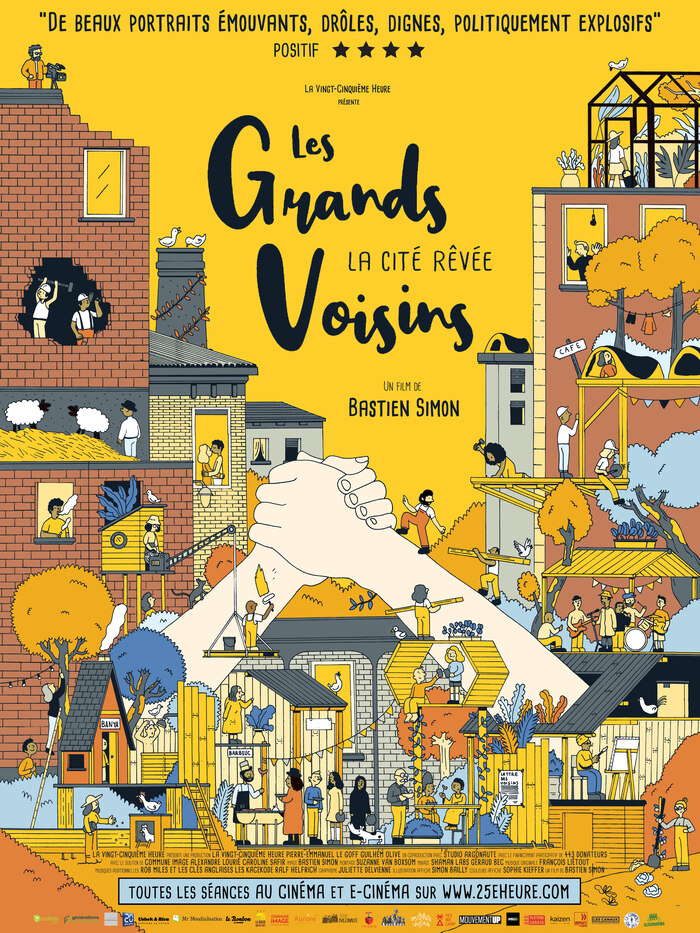
How do you define your product – virtual cinema, e-cinema or VOD?
What we offer is a virtual cinema, with screenings at set times organized with the cinema exhibitors in a geolocated zone. This perimeter means that they can still work with their usual audience. It’s closer to a normal cinema screening but for the fact that the theater is virtual, since it doesn’t actually have four walls and it’s hosted on the cloud. Although cinemas are currently closed and the screening cannot be physical, the event can still take place – people watch the film at the same time and have real interactions with the directors and film teams during Q&A screenings.
Le FIL – the Forum des images virtual movie theater on La Vingt-Cinquième Heure platform | teaser © Forum des images
There is a huge difference between the VOD/SVOD model and working with cinemas, like we do. By being geolocated, we recreate the limitations of a real cinema. Paradoxically, these limitations provide added value: they allow the cinema to work with its audience, just like a local movie theatre. If our virtual cinema covered the whole country, we would become a regular VOD service. We wanted to draw on the marketing strength and communications of all movie theatres, their power and their familiarity with community networks to feed Q&A sessions, attract audiences… It’s a totally different philosophy in terms of viewer impact.
Our service is useful for health reasons (related to COVID) but also for reasons related to distance. Some areas have very few art house cinemas, and even very few cinemas in general. A lot of people cannot go to the movies more than once a month, taking their car and doing maybe a 50-, 60- or 100-km return trip. It takes time and money. There is a divide between areas with excellent array of cinemas, and others with very little access. A virtual cinema screening will cost the same, but there can be two or three people in front of the screen. It will be possible to attend a virtual screening at home, without the hassle and the cost of physically going to the cinema.
In conjunction with the launch of your virtual cinema, you published a call entitled ”Resist”. Resist what?
Well, first of all, we need to resist feeling blue! When the cinemas closed, a very large majority of cinema professionals were dealt a heavy blow. Resisting this great shock means we are not simply going to wait for it to be over. We will fight to find solutions and change the game!
Above all, we must resist the temptation that certain distributors may have of moving to VOD platforms. In my opinion, this is not the right place, especially for art house films. The vast majority of films will not do well there, because they get drowned out by bigger releases. Now, we can fill a virtual cinema screening for a film that would get lost on a VOD platform. Movie theatres must not only physically host viewers, but also communicate, especially with associations, and curate a selection that caters to the interests of the viewers. That is what will make all the difference.
For decades, cinemas and distributors have been in a symbiotic relationship. It needs to be maintained. We need each other. Now is not the time to sell off films and say, “We’ll go off to Amazon and Netflix; that will solve everything.” It might solve cash flow problems for a short time but, in the long term, the disappearance of exhibitors will be the death of cinema. First and foremost, the cinema experience is the discovering a movie in a dark room, on a big screen, with the best sound possible. Then, it’s sharing this experience when you leave the theatre with your friends. Cinemas must remain the place where you get the first taste of a movie. I cannot stress this enough!
You mentioned Q&A sessions, the importance of sound quality… How are you working on these? Are there new functionalities?
The online Q&A sessions currently work with a video chat window where you can only see the speakers. The audience asks questions by text only, with a writing module from viewer to speaker that works very well. This was important for us, as it allows for discussion, in particular for a movie like My Name Is Clitoris. During previews, we noticed that women express themselves a lot better on the topic of their sexuality when they remain anonymous.
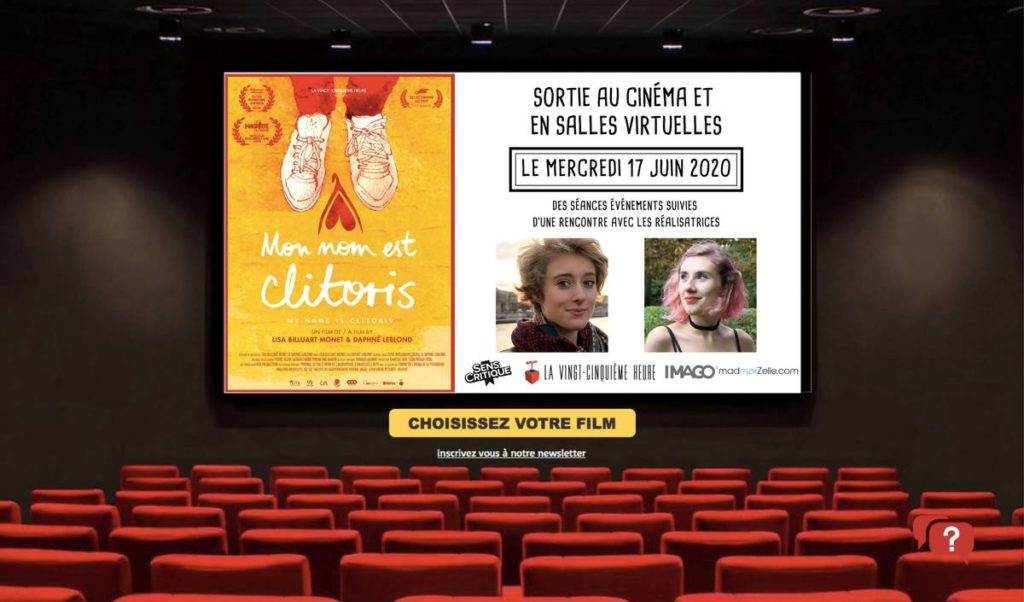
We have been receiving more and more requests for video interactions with the audience. In the not-so-distant future, we will offer customizable sessions, with two-way video or chat only, depending on the exhibitor’s request. On the VR side of things, we will be offering experiences as part of a screenings. It will be less immersive than wearing a headset, but we will be featuring 360-degree movies.
As for the sound side of things, unfortunately we cannot do much, as it greatly depends on the viewer’s hardware. We recommend using headphones, if possible, but for family movie nights, that’s not really possible. You can connect the service to your television and that will improve the sound if you have good speakers. We provide the same as other streaming platforms. No more, no less! I think it’s good that the virtual cinema experience isn’t as good as a real movie theatre! The best thing is to go to the movies and experience the excitement of a new release. For now, the virtual cinema is the worst form of cinema… except for all the others, to repurpose what Churchill said about democracy. (“Democracy is the worst form of Government except for all those other forms that have been tried from time to time…“). It’s not the perfect remedy, but there is no other choice (in our minds) to get as close as possible to a real cinema screening. We encourage people to go back to the movies as soon as it is possible.
In time, would you be prepared to consider removing the geolocation? After all, why should someone in the depths of Ardèche not be able to go to a screening at Ciné 104 in Paris, if they want to?
We have gotten some comments – just a few out of the tens of thousands on our site – that said, “In the end, you’re just excluding us again!” To that, we say, “Movie theatres come first! If you have a local movie theatre, suggest our service to them! It costs them nothing. However, if they don’t do their homework, there’ll be no communication, no audience, and no profit!”
We are trying to make it so that people who, for now, do not have access to our service become our spokespeople with their local movie theatres. When we’ve more or less done the rounds, we will perhaps realize that there are in fact areas with no cinemas. If so, the solution is not to make it nationwide, but to open the perimeter of the closest cinema a little bit, so that every area has a virtual cinema nearby. We will perhaps expand the perimeter by 60-70 km in those instances.
Now, there is another divide, the digital divide, with areas where the Internet and even the mobile network that connect people to the service are not good enough. We have no control over that, except, perhaps, making our service available via a TV channel…. But this is not our priority for the moment. We hope that, in three to five years, the network in France will be good enough across the whole country so that this digital divide ceases to be a problem.
You referenced Amazon and Netflix, but there are more specialized, curated platforms as well, like Mubi and Tënk. How are you positioned with relation to this kind of service?
We wanted to maintain the ecosystem as it was before, with a wide range of options, and use it to try to correct imbalances. The idea is prioritize French films, especially art house films. From a curatorial point of view, our line-up is pretty similar to what Mubi [4], Tënk [5] and others offer. What we are trying to create is live events and encounters, which is where real added value lies, I think!
We want to support the reopening of cinemas, with screenings at set times. Each screening that takes place in the “real” cinema can also be replicated with a virtual screening on the cloud, to compensate for capacity limitations, since cinemas will most likely open with a third or half of their capacity. A simultaneous virtual screening means that people won’t feel excluded, especially the more vulnerable members of society – elderly people for instance, who are the number one art house cinemagoers.
As for the division of profit, there’s also 40% going to the movie theatre. That’s a huge difference compared to VOD platforms. Cinemas are at the heart of this – for us, it’s key!
How does the ticket price currently break down?
We asked the company Secoya [6] to evaluate the carbon footprint of watching one film in HD (like all platforms, we are currently streaming in HD so as not to overload the network). So there’s €.10 for carbon offset and €.32 in bank fees for the online payment system. Then 40% goes to the exhibitor, 40% to the distributor and 20% to the La Vingt-Cinquième Heure virtual cinema. For screenings with Q&As, viewers contribute one extra euro that either goes to the director for their time or for what we call “impact” screenings – where the extra money goes to a community organization or foundation related to the theme of the film.
The average ticket price is around five or six Euros for Impact screenings and for those with one or more guests.
How much will public cultural institutions contribute?
We’ve applied to the CNC, and we hope to get a positive response in the coming weeks. We expect help from public institutions. We’re also seeking European funding and I hope to receive support from the public investment bank BPI.
On top of that, I’ve made an official request to the office of the Minister for Culture and to Dominique Boutonnat, President of the CNC, to make our box office a CNC box office. We work with movie theaters and pay them income: we’re as close to a real movie theatre as you can get while they are closed. For us, rather than paying 20% to the Ministry of Finance, it makes more sense to pay 5% VAT, like the CNC box office, and 15% in admissions tax and copyright… We would rather inject that 15% directly back into the French film industry and help get it back on track.
To date, we’ve had no response to our requests for help, even though we feel our project is very tangible and has great potential, not only during this period of closure, but also from 22 June onwards (when French cinemas will be allowed to reopen). We know that cinemas will be dependent on solutions around limited seating capacities, and fresh film releases. For now, the big companies are waiting for major US studios to announce release dates for their films, but the studios are on the same calendar as local exhibitors. Consequently, they will likely wait for American theaters to reopen, so probably not before November, December or even January 2021. That means the heavyweight releases, which make up over 50% of the French box office, won’t be in theaters until the beginning of next year. Then what happens? Do we wait around for theaters to reopen in January? Tens, even hundreds, of exhibitors would go bankrupt, become insolvent. We want to help them.
Right from the start of your career, you seem to have reinvented film financing and distribution with each project.
Ironically, I was lucky not to come from a family of film buffs. I only had access to the movies relatively late. My first memory of the cinema is from when I was around 6 or 7. It’s the tracking shot above the sea at the beginning of The Big Blue. Being in a movie theater is magic, and I care about that kind of magic!
I had no contacts in the film industry when I started my studies, or when I entered the job market. I learned on the job, just approaching things with common sense. I worked basically every kind of job in film and audiovisual production: video journalist, assistant set designer for fashion shoots, AD on R&B clips, where I was paid in wads of cash out of the back of a truck… Because I didn’t have rules or habits around how to produce and distribute films, I gained a broader, unblinkered vision.
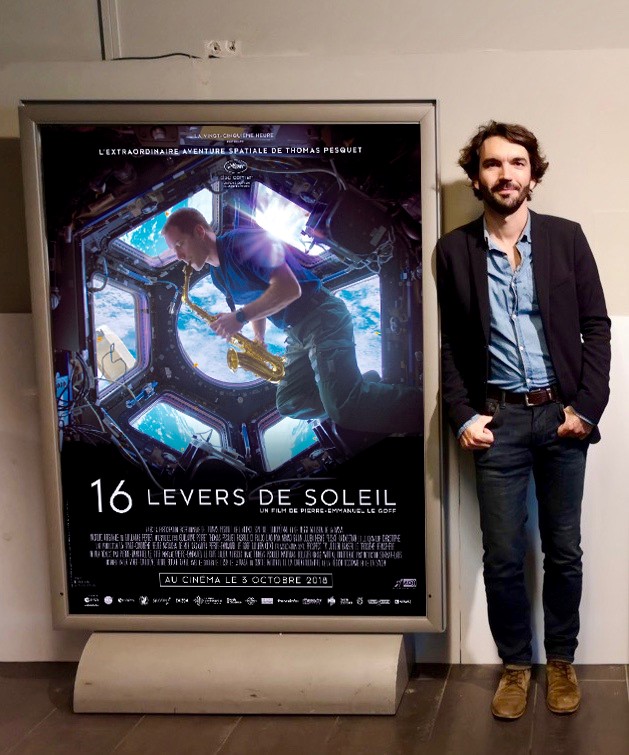
As early as 2000, when I shot (on both video and film) and co-directed my graduation film, my partner and I experimented with different approaches to format and funding: we crowdfunded the project by pre-selling VHS copies. I worked off the subscription model that my father used in publishing. I remembered holidays where he received checks to publish his first book. I just applied that to film.
A few years later, I produced my first short film, Marie-Eve Signeyrole’s Alice au pays s’émerveille, starring Emir Kusturica. We wanted to shoot in Serbia. Because we couldn’t get funding through the usual channels, I thought we should try online. My downstairs neighbors were web developers and, together, we created the world’s first film crowdfunding platform. Pieces about us were published around the world after we posted a video where we were literally naked. We said we needed money to buy clothes to get to Serbia because of the financial crisis! We were in all the French and international press: “The producers of a film with Emir Kusturica get naked!” It went viral!
Promotional video “They get naked to produce their movie!” for Alice au pays s’émerveille
I started to line everything up: technology, crowdfunding, and also how to approach the media in terms of messaging and image, because it’s important to get traction. For the legal side of things, I had three years of law school under my belt. After working in distribution for the first time at Commune Image Média on the film Donoma (it was insane, there was this crazy atmosphere!), I founded La Vingt-Cinquième Heure to produce and distribute films. We try to be innovative and have continued crowdfunding. Where there’s no market and no screenings, as in VR for instance, we invent solutions and try to think outside the box.
When I distributed Donoma, no one had really taught me what to do. I just used common sense and logic. It was the same thing when it came to exhibiting and the virtual movie theatre. If I had been taught specifically about exhibiting and distribution at school, I might never have thought of it! I’m lucky to have learned on the job.
Given your innovative approach, might directors one day use your platform to make films directly funded by the public, without an intermediary?
We might add crowdfunding to the site in the long-term. When I launched the crowdfunding platform for Alice au pays s’émerveille, I intended to open it up to other film projects. It was a partial failure: MyMajorCompany, Touscoprod, KissKissBankBank, Ulule – all these platforms moved quicker than us and were launched in the subsequent weeks and months. I don’t want to make the same mistake. We must take the importance of production into account, which I couldn’t do at the time.
On a similar note, what sets us apart from VOD is the fact that we rely on movie theaters and don’t want to circumvent them. The movie theater itself is the main experience; it also has the huge added-value of staff knowledge about how to reach audiences and organize events and debates. That’s absolutely vital, and so is the role of the producer. I don’t think directors can work properly alone. They need continuous dialogue. It’s in that dialectic with the producer that a director can really affirm their vision. If they’re alone at the helm, it’s a problem. I should know: I am a director, producer and distributor. Luckily, I have a business partner who challenges me.
Is your virtual movie theater similar to the platforms used by the festivals that are moving online this year? They often virtually mirror the real places we can no longer visit.
Indeed, we’re trying to recreate the world as it is, as closely as possible. With our system, we are going to try to give each theater its own visual identity, so that a photo of the “real” theater frames the screen. It was important for us to recreate that. Our virtual cinema is still just a crutch, a digital prosthesis, that has to be used wisely. Nothing can replace face-to-face interaction.
What do you think about these new platforms and virtual worlds?
I’m not a big fan. I have friends who spend far too many hours in front of a screen playing in virtual worlds like that. Nothing can replace face-to-face interaction. These kinds of tools can be really useful for businesses; they could also be a way to limit our carbon footprint in the future. But we have to be careful – there is always a dark side to these things.
Unfortunately, when it comes to tourism, we’re going to find ourselves in a situation where it will be necessary to ban leisure flights. I don’t think it’s far-fetched to think that, in five to ten years, some places will only be accessible in VR, so as to protect them. There are so many people visiting world heritage sites. We can’t go on like this. I’m thinking about the Lascaux cave for instance, which will be recreated in VR. There are places we’ll have to give back to nature, free of all human presence. In this way, VR can help us share the spirit of a place without damaging it.
You’re a director and screenwriter. Imagine what comes next in this scenario: the day before the local elections in France, a virus shuts down the entire economy and all cultural life. For two months, people find themselves locked inside, cut off from their normal lives…
It’s funny. A few years ago, I was working on a script quite similar to what we’re seeing now. Except, in my version, it was a solar storm that cut off all telecommunications and electricity in the world. What I imagined at the time – and this more or less happened during the French Yellow Vest protests – was that people would draw up a list of grievances, to be used as a basis for a new constitution, and maybe a new Universal Declaration of Human Rights, focusing on the quality of life for everyone. I think out post-2020 pandemic world will have to be a world with multiple spaces for debate. Movie theater is one of those spaces.
Our system of virtual theaters should be seen as a forum, a place for debate about the post-2020 pandemic world and environmental transition, but also about migration, social issues, gender equality… Ideally, lifting lockdown should be an opportunity for an enormous, free-ranging debate, and – this is what I hope, but I’m realistic – radical decision-making.
What is your message to the VR community?
Virtual technology is what connected us over the last weeks. Actually, I almost gave our online theater the tagline “Virtual theaters. Real emotions.” We’re connected via technology, but that doesn’t mean there’s no emotion, empathy or real intellectual dialogue. There are real opportunities in the virtual world, a clone of the real world that keeps us in communication during pandemics.
There are also real economic opportunities to boost the development of VR. We have to get out of our comfort zones and innovate, free ourselves. We’re living in interesting times, where things that seemed impossible a few weeks ago are now possible. I’m currently in talks with STUDIOCANAL to set up an interview with Quentin Tarantino after a screening of Pulp Fiction! It could happen. l might come back in ten days’ time and tell you, “Quentin Tarantino said yes”! Lots of barriers are breaking down. We’re all in our kitchens, on Zoom, with our kids in the background. The old social hierarchy, where we had to meet at the large, imposing headquarters of big TV stations, has given way to a world where we’re all equal, and we’re starting to remember that!
NOTES & HYPERLINKS
[1] quote from The Leopard movie by Luchino Visconti, 1963, adapted from the homonym novel by Giuseppe Tomasi di Lampedusa published in 1958
[2] more about Le FIL, Forum des images virtual movie theater online here
[3] the virtual movie plateform La Vingt-Cinquième Heure is available online here
[4] the VOD plateform Mubi is available online here
[5] the VOD plateform Tënk is available online here
[6] Secoya company website is available online here



